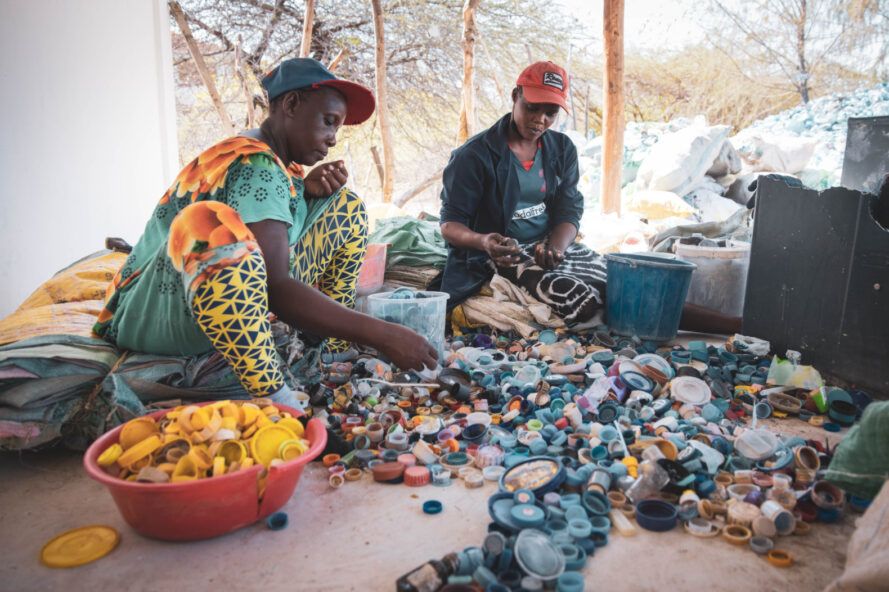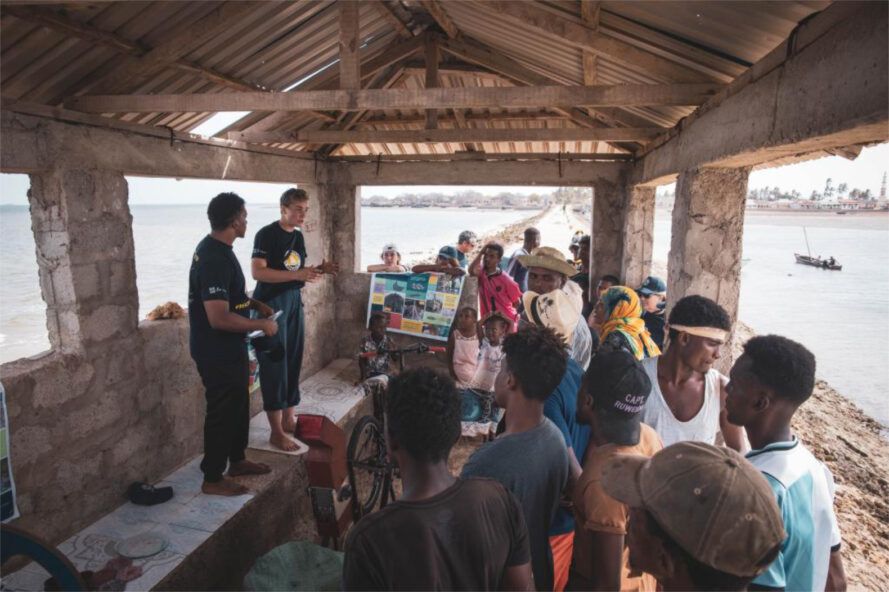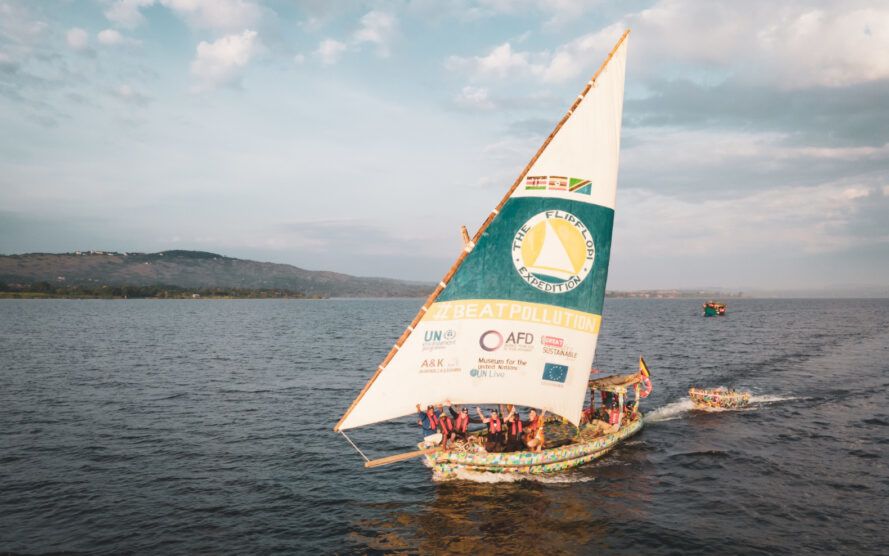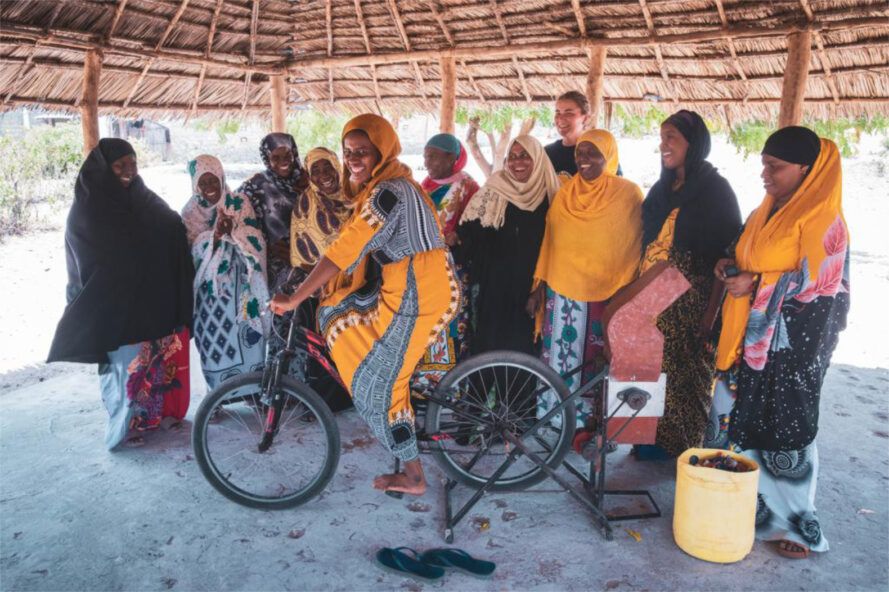Written by Inaara Thawer on June 21, 2022

Lamu’s waste management challenges
In 2015, Ben Morison founded the Flipflopi Project as a way to tackle plastic waste washed up on the shores of the Lamu archipelago in Kenya. Since the main island of Lamu is disconnected from large-scale waste management and recycling systems on the Kenyan mainland, there is only one waste disposal site for a population of 30,000. Consequently, waste often piles up around the island and is burned out in the open, emitting toxic fumes. Other waste gets blown into the ocean, some of which is washed ashore.
Each year, 35 to 40 tons of single-use plastic waste wash up on Lamu’s gorgeous sandy beaches. The plastic waste ranges from beverage bottles to flip flops, the most prevalent form of plastic waste washed ashore in 2015. From this, Morison coined the name “Flipflopi” for his initiative.
Frustrated by the copious amount of littered waste, Morison partnered with Ali Skanda, a local dhow builder. Dhows are traditional East African sailboats that transport goods from East Africa to spice-trading regions like India and the Middle East. They are still used today for transportation purposes, especially in more traditional towns like Lamu. To pay homage to the local heritage and maximize recycled plastic waste, Skanda and Morison set out to construct the world’s first dhow made from recycled single-use plastic. In doing so, they hoped to inspire others to devise innovative solutions that creatively utilize discarded plastic, thus creating a circular economy.

Building a dhow from plastic waste
The Flipflopi Project began with “Flipflopi Ndogo” or “Little Flipflopi” in Swahili. To create this 10-meter long vessel, seven tons of plastic were collected from the beaches, then crushed and cleaned. Finally, they were melted and poured into molds to form the boat’s structure. The dhow also features a sail made of 1,500 plastic bottles and a patterned hull made from 30,000 flip-flops.
Traditionally, dhows are made from hardwood, which is extremely costly to build and maintain. For the majority of the population in Lamu, these expenses are unsustainable. By using plastic waste as a raw material to build dhows, these costs could be slashed. This would simultaneously provide boaters with sturdy vessels and have a positive impact on the marine ecosystem.

Flipflopi’s initiatives in 2022
Flipflopi Ndogo was the prototype for “Flipflopi Kubwa” or the “Big Flipflopi” dhow, which Morison and Skanda plan on sailing around the world. Currently, Flipflopi Kubwa is under construction. The research and development team is working to improve the vessel’s structural integrity. This dhow will be their biggest project yet. It will span 24 meters, weigh approximately 60 tons and will be covered in a patchwork of over 285,000 flip-flops.
Earlier this year, the team carried out a three-month research study examining plastic pollution within a 300-kilometer radius of the Lamu archipelago. The study found that even in the more remote islands, the state of the mangrove forests and coastlines were worse than expected. Much of the macro-litter collected was plastic, with bottle caps and cap rings accounting for 20% of the waste. This is followed by flip flops and PET bottles, which each accounted for 15% of the litter. These exceedingly high levels of plastic impact biodiversity within marine ecosystems and consequently harm humans dependent on these resources.
After the baseline study, the team undertook their third expedition on Flipflopi Ndogo, focusing on villages within Lamu county. Through this initiative, communities were shown low-cost tools to maximize how they upcycle single-use plastics. These low-tech tools included bicycle-powered plastic shredders to DIY PET bottle-string cutters. Therefore, by assisting these low-income communities with the tools they needed to sustainably boost their economy, Flipflopi also empowered them to create a healthier living environment and protect Kenya’s biodiversity.

Growing Flipflopi
In the near future, the Flipflopi team is working towards establishing a Heritage Boat Building Training Center. This learning hub will teach boat builders to design and build their own recycled plastic-based dhows. They will build on their vernacular knowledge of boat-building and blend it with contemporary materials and processes. In doing so, this will create a closed-loop system by recycling community waste. Additionally, this initiative will tackle key socio-economic and environmental challenges pertaining to the local context.
Additionally, the Flipflopi team intends to set up a Material Recovery Center for plastics. This will be the first of its kind in the Lamu archipelago and will serve over 140,000 people. It will work closely with local communities to regularly collect single-use plastic waste and minimize additional plastics from polluting the lush marine ecosystems. The abundant discarded plastics will be used as a low-cost raw material used at the boat building center and for other small-scale projects assembled by the community. This way, a waste management system will be established across the archipelago and allow the population to generate income, thus creating a sustainable circular economy.
Community-based solutions to local environmental challenges are vital to creating and sustaining circular economies. As the Flipflopi Project demonstrates, these initiatives have positive impacts on the environment and several socio-economic benefits for the Indigenous communities.
